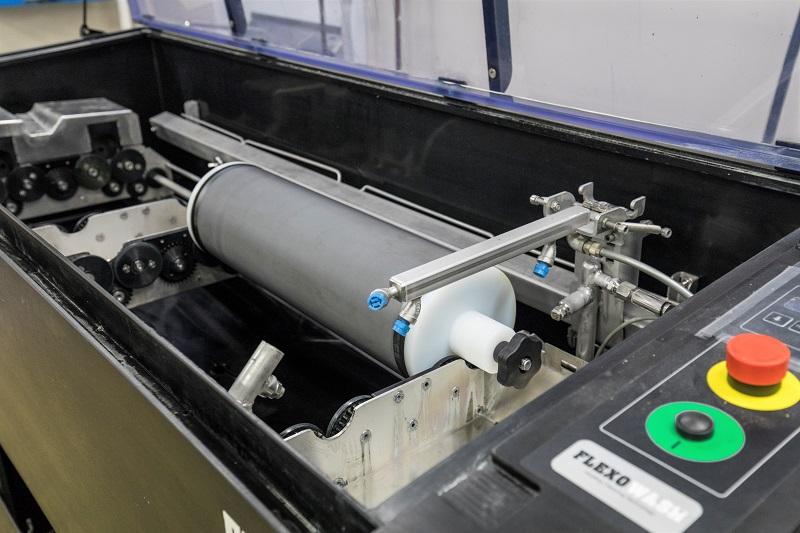TIME
Time is simply the amount of time that the anilox is being cleaned during the low pressure wash cycle. If you have an extremely dirty anilox roll or sleeve, then you may need to increase the wash time for that particular roll or sleeve.
During a new unit startup, we like to clean the anilox for 10-20 minutes to make sure that we get a good, deep clean on them. With a regular wash schedule on the anilox rolls or sleeves, the low pressure wash time may be able to get cut down to 5-10 minutes. However, if you have an anilox that has been in the press a while or has only been wiped down and then stored, you might need to take a look at the wash time. Coating rolls normally take a longer wash time than an inked roll.
TEMPERATURE
There are two different temperatures that will need to be checked. The first is the temperature of the cleaning solution. The standard for cleaning inks is setting the temperature between 128°-132°F. If you are trying to clean a coating roll, then you can bump that up a little to around 136°F.
It is important to note that the temperature will drop some during the wash cycle. If you see a large drop in temperature, then your diaphragm pump is running too fast. Remember: the diaphragm pump only needs to run fast enough to keep the roll wet. There is a flow valve on the pump for setting the pump speed.
The second temperature to check is that of the high pressure rinse water. This should be set between 80°-90°F. If the rinse water is set too high, this can cause a "staining" effect on the roll. Also know that the harder your water is, the more water spots you may see on your rolls.
TURBULENCE
Turbulence is the amount of pressure that the high pressure rinse pump is producing during the rinse function of the unit. There should be a pressure gauge on the high pressure pump and normal operating range is between 1500-1700 PSI. If your rinse pressure is below this range and it can't be turned up by adjusting the black handle on the pressure regulator (turning clockwise), then there might be another issue that needs to be addressed.
So, before you make the call, check the 3 T's to make sure that the settings are correct. If you do need to call us, have the 3 T information handy and that will help us diagnose the issue.


